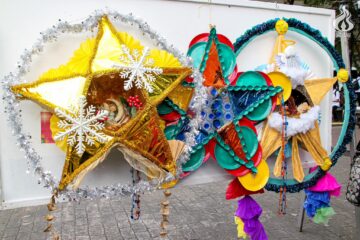
THE CULTURAL Center of the Philippines (CCP) was jam-packed with people flocking to the 13th Pasinaya Open House Festival: Palabas at Palihan last February 4-5, 2017. With the theme “Art for Peace,” the collaboration of companies, groups, and individuals has brought the Filipino spirit closer to the people. Art enthusiasts refreshed on ideas and inspiration while first-timers were both thrilled and astonished to witness a melting pot of culture and the arts right before their eyes.
The festival offered Palihan (workshop-all-you-can) on the first day, encouraging participants to bring out and relish the artist within. More than forty workshops were made available to everyone interested in practicing various forms of art, music, theater, dance, and other creative pursuits.
The following day, musical ensembles such as the University of Santo Tomas Symphony Orchestra, Philippine Ballet Theatre, PWU-JASMS Rondalla, Philippine Madrigal Singers, Ukulele Philippines Ensemble, and Bayanihan Philippine National Folk Dance Company, Maquiling Ballet, and Philippine Philharmonic Orchestra enticed audiences.

The Bayanihan Philippine Folk Dance Company took to the stage with its illustrious band of strings and percussions. The short performance left people in awe of the company’s retelling of Filipino legends through endearing dances. In the dim of the stage, dancers swayed branches with built-in lights as they skipped to the tune of a fiesta. The performers’ vibrant bandanas and skirts contrasted with the blue tint of the backdrop.
A brief yet powerful performance of the Singkil moved the audience to roaring rounds of applause. Dancers clad in gold and multi-colored outfits gave way to the main performer depicting Ramayana. The clashing of wood on the stage and the rhythmic tune of strings created an image of a god gracing mortals. The scene called to the hearts of both Filipinos and foreigners, displaying the country’s colorful history and festive tradition with Spanish influences.
Apart from the performances in CCP’s theaters, some shows also took place outside. Under the scorching heat, dedicated performers danced barefoot on the gravel of the driveway. Several dance groups showcased a kaleidoscope of traditional Filipino dances that originated in different provinces and islands.

A crowd gathered outside the main entrance to gaze at the skillful and synchronized execution of the Castanets Dance. People bobbed their head to every click of wood on wood. Men waltzed in customary farmer outfits, and flicked at the hems of the women’s flowing skirts—creating an image of classic courtship.
Pasinaya is an annual event at the CCP that invites the masses to immerse themselves in the affluence of Filipino culture. It also serves as an opportunity to awaken and enrich anyone’s hidden passion for painting, dance, music, acting, and other art forms. F JULIENNE MAUI C. MANGAWANG



